how to tell a naked man what to do
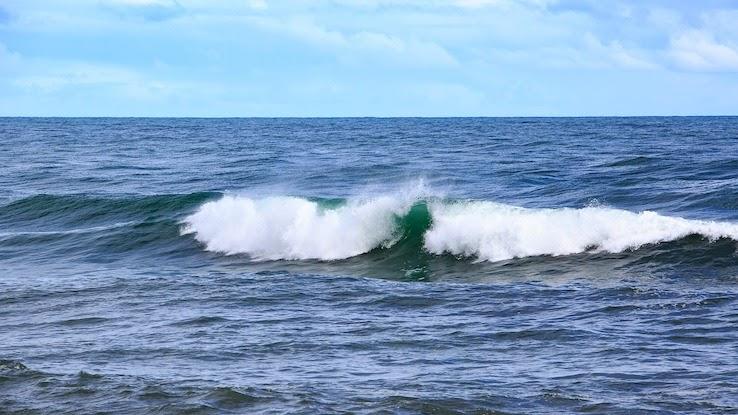
Some scientists believe the delicate residuum in the body of water is getting set up to collapse. Between climate change, plastic pollution, toxic chemicals and overfishing, marine ecosystems are on the brink of undergoing potentially catastrophic changes. Climate change solitary is causing body of water levels to rise and bleaching coral reefs that are at the heart of many marine ecosystems.
We may not seem continued, but the health of the globe's oceans plays a central role in the survival of humanity. Take a look at some of the man-made destruction that needs to modify if humans desire to live to see some other century.
More than Plastic Than Fish by 2050
Today, the ocean already contains more than 165 meg tons of plastic. To put that in perspective, that's 25 times more than the weight of the Great Pyramid of Giza. Whoa! The Ellen MacArthur Foundation predicts there will be more than plastic in the oceans than fish by 2050, with the plastic speculated to weigh at to the lowest degree 937 million tons versus 895 million tons of fish.
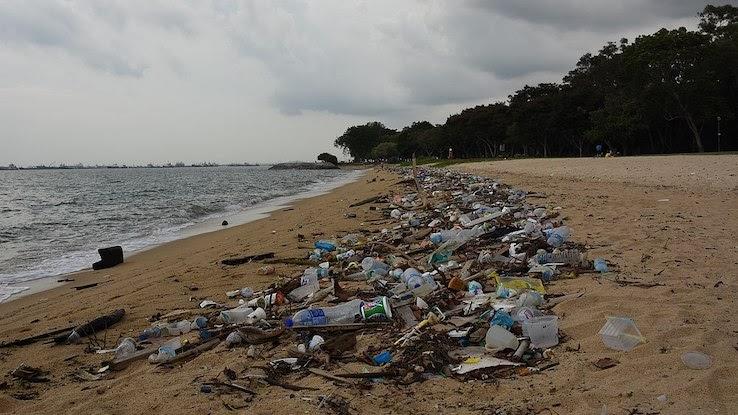
This growth tin can be curbed if we lower our plastic utilise and increase recycling rates for plastic. A mere xiv% of plastic packaging is recycled today, while our overall plastic usage continues to rise.
8 Million Tons of Plastic in the Bounding main Annually
Each year, we add approximately viii million tons of plastic to the ocean. The root of the problem is that humans produce more than 300 1000000 tons of plastic yearly, and half of that product is unmarried-apply plastic. Unfortunately, we use items for minutes that end upwardly staying on the planet for a few hundred years.
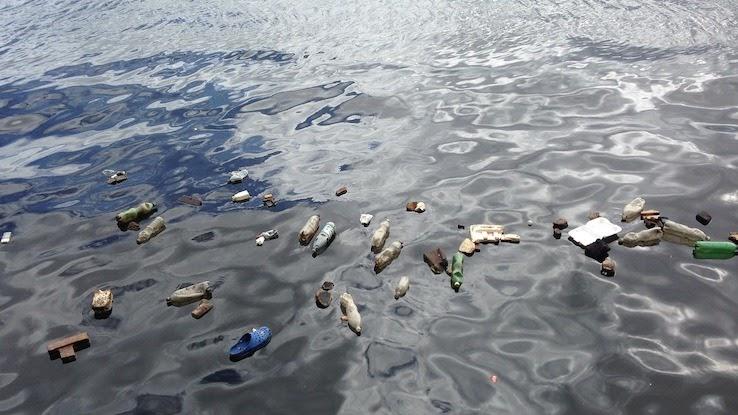
Obviously, plastic is a really cheap, handy material, but overusing information technology has led to extreme environmental problems. For example, 40% of our plastic employ is for packaging, which is mostly thrown out immediately one time the packet is opened.
Impairment to Millions of Seabirds Each Year
Plastic is killing seabirds at a ridiculously high charge per unit. Around a meg birds die each year because of plastic they ingest. The plastic takes upwards space in their stomachs, which can eventually cause health problems or even starvation.

Scientists think about 60% of seabirds take eaten some form of plastic to date. By 2050, they approximate that number will rise to 99%. In add-on to the threat that comes from eating items, plastic trash also kills seabirds by entangling them and causing them to drown, starve or suffocate.
30 Years of Mass Coral Reef Death
In the past 30 years, we have watched one-half the coral reefs in the oceans die. This is a huge ecology concern, considering that humanities health depends on them. A 4th of all marine species are supported by coral reefs, and one-half a billion people also depend on them.
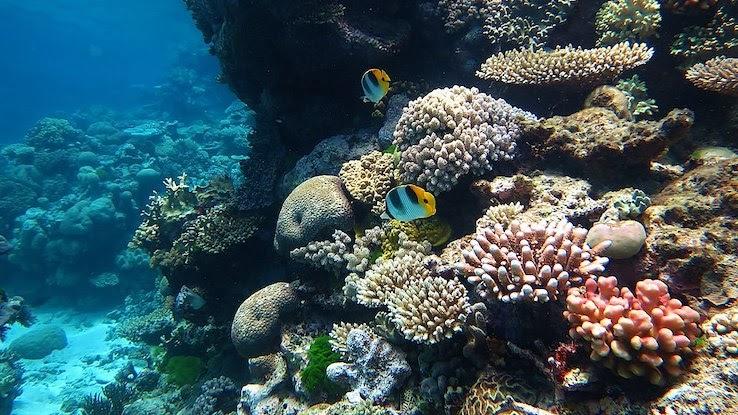
Scientists estimate that by 2050, 90% of the world'south coral reefs will be gone unless drastic measures are taken. Equally coral reefs play a critical role in producing part of the oxygen we breathe and protecting coastlines from catastrophic storms hit at total force, something must be done to stop them from dying.
Rising Body of water Temperatures
World's climate is largely regulated by the oceans. Body of water temperatures are ascension rapidly as they absorb about of the heat trapped on Earth due to greenhouse gas emissions. This temperature ascension is responsible for desperate changes in marine ecosystems, including mortiferous coral bleaching.
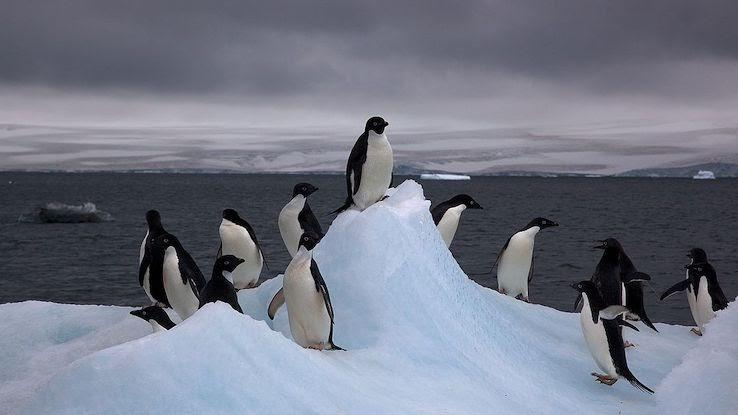
The rise sea temperature threatens marine life that make upward part of the world's nutrient chain, causes massive population declines in many types of wildlife — polar bears and penguins, for instance — and leads to more than frequent and more intense storms. Unless we can prevent the sea temperature from increasing even further, we face irreversible harm to the planet.
Massive Coral Bleaching of the Great Barrier Reef
Much of the oceans' coral reefs are bleaching at unprecedented rates, thanks to rising sea temperatures. The Not bad Barrier Reef, in particular, has been severely impacted. Half of the reef has died since 2016 because of warmer ocean waters killing the reef's main food source: colorful algae.
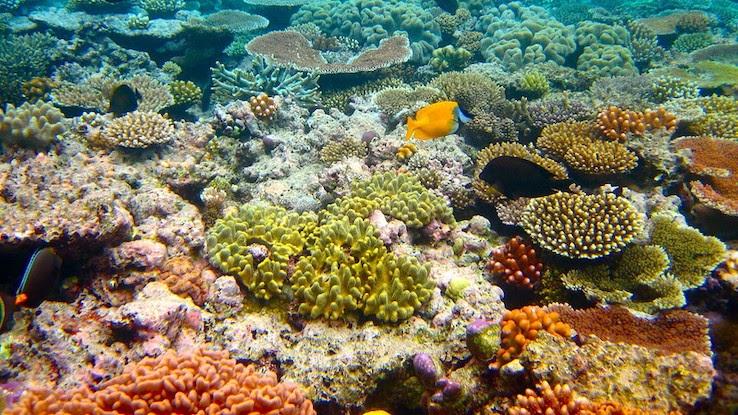
Serious coral bleaching used to happen to reefs about every 27 years, but since the '80s, the average rate has risen to every six years. Unfortunately, reefs take no less than 10 years to recover. Information technology's possible the Great Barrier Reef may never recover, based on how much of information technology has died over the by few years.
More than 100,000 Marine Mammal Deaths Yearly
A sperm whale died on a Spanish beach afterwards suffering from inflamed abdominal tissues as a result of ingesting at least xxx kilograms of plastic, including fishing nets and shopping bags. That sperm whale definitely wasn't the only casualty of the growing crunch. More than 100,000 marine mammals meet their death annually due to plastic debris in the water.
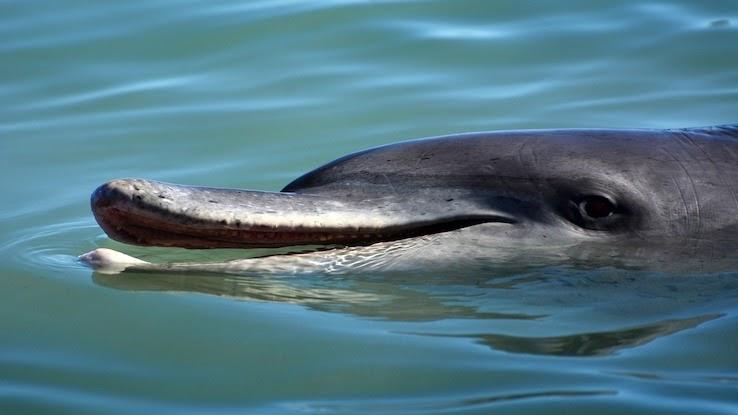
Eating plastic is about dangerous to marine mammals, simply getting entangled in plastic fishing gear is another way they can dice from it. Marine mammals can't breathe underwater and can easily drown when they become tangled in plastic.
Dangerous Plastic Deep in the Ocean
An American diver bankrupt the tape for the deepest swoop on record in 2019. Normally, that would be an extremely heady occasion. However, in this instance, the diver's trip into the depths was marred by finding a plastic handbag and plastic wrapper all the way down near the bottom of the Pacific Bounding main'southward Mariana Trench — 7 miles deep.
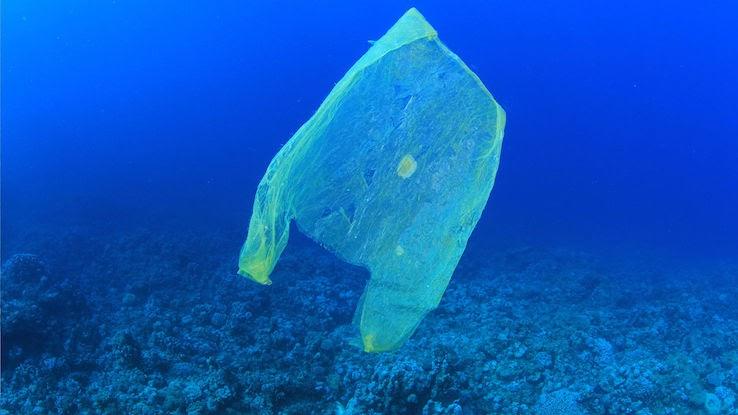
With the millions of tons of plastic finding its manner into the ocean each yr, it probably shouldn't be a surprise to discover plastic making its fashion to the ocean's depths. Scientists don't know where all that plastic ends upward, and then it makes sense that some of information technology simply sinks.
Massive Marine Pollution from Land
Nonpoint source pollution, also known as runoff from land, is the primary source of body of water pollution. It comes from both modest and big sources, including septic tanks, cars, boats, farms, ranches and forests.
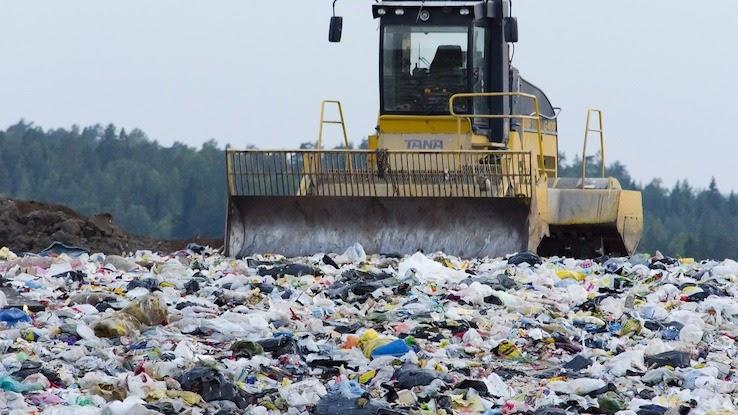
Something equally seemingly unrelated as oil dripping from a car onto the road can make its way into the bounding main. Multiply that by millions of cars dripping oil per solar day, and it adds upwardly. Runoff can brand water unsafe for both humans and wildlife, but correcting the pollution of coastal and river waters is no cheap endeavor, costing the U.Southward. millions of dollars each year.
Rise Sea Levels from Melting Ice Caps
By 2100, experts believe glacial and ice cap melting will cause the sea to ascension by upward to 2.vii feet, possibly more. If the warming causes the Greenland ice sheet to cook, sea level could ascension by some other 20 anxiety around the earth.
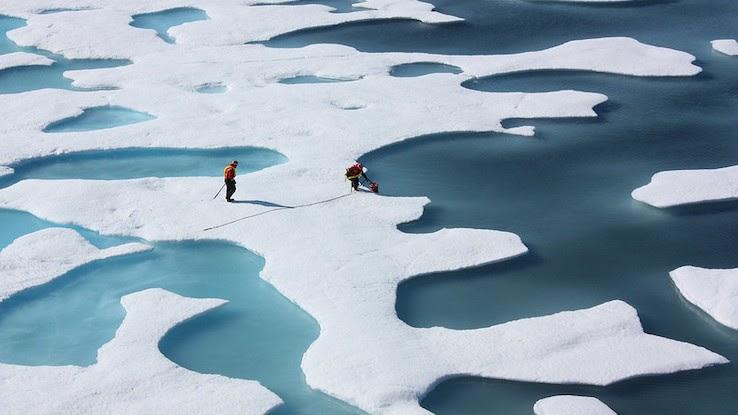
Almost twoscore% of people alive within 25 miles of the coast. If body of water levels rise, a huge clamper of the world'southward population will exist severely impacted. The U.S. Gulf Coast, about of Europe, Japan and key cities like New York City, Mumbai, Shanghai and Dhaka are among the regions that would be underwater.
Melting Ice Caps and Global Climate Shifts
Around Antarctica and Greenland where the sea's water layers interact regularly, surface waters get salty, sink to the bottom and take about a thousand years to get in around the world before resurfacing. This is how ocean currents — and stable global climate patterns — are created.
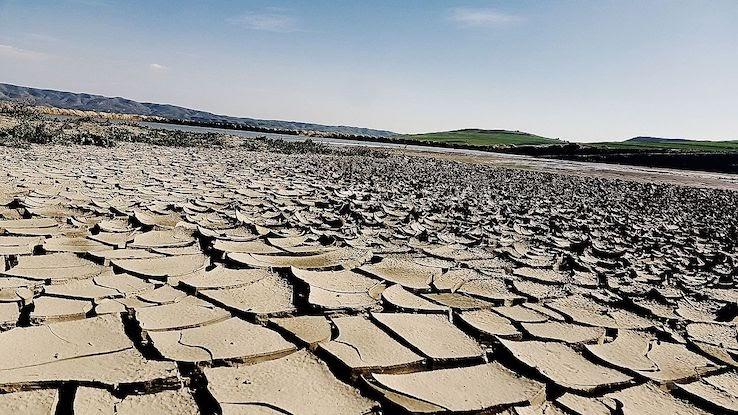
If the canvas of water ice in Greenland started drastically melting, the likely impact on the Gulf Stream would destabilize the weather condition in many regions, including North America and Europe. The end issue of that includes extreme weather, like hurricanes, becoming much more prevalent and intense.
Fertilizers and Pesticides in the Bounding main
A big part of the pollution of our oceans comes from land pollution, such equally runoff from farms. Considering farms use a lot of fertilizers and pesticides, those toxic substances terminate up in rivers and, eventually, the body of water, causing damage to marine ecosystems.
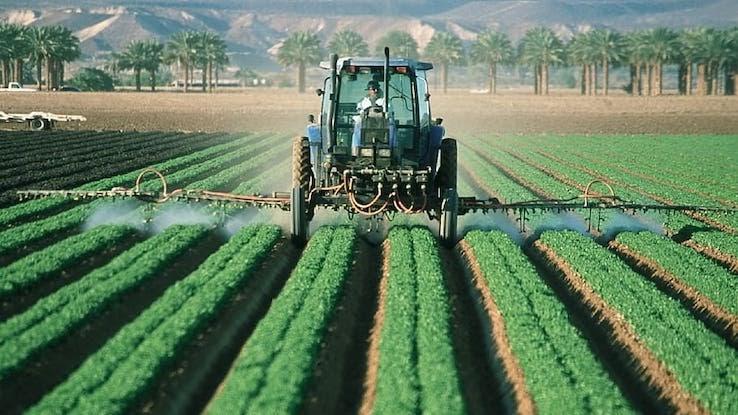
For instance, fertilizers incorporate a massive amount of nutrients, and when they run off into the bounding main, certain species of algae experience a growth explosion. That may not audio bad, but algae blooming at such a loftier rate releases unsafe levels of toxins into the water, poisoning marine life and potentially destroying ecosystems and turning them into dead zones, unable to support any marine life.
Crisis for Mass Numbers of Sea Turtles
Bounding main turtles eat plastic because they mistake it for food. Plastic bags look a lot like jellyfish, for example, and angling nets await like seaweed. Eating plastic can be mortiferous to these creatures, and they are already endangered. The oceans gain another 8 tons of plastic every yr, then this has become a big problem.
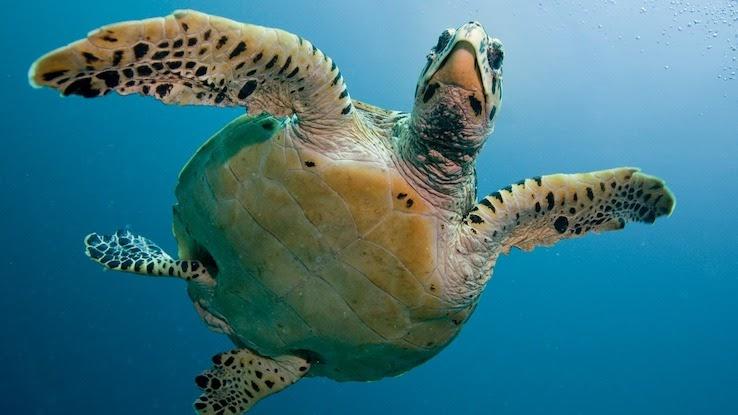
When turtles eat plastic, it can cake their intestines or even pierce them and cause internal bleeding. Plastic in a turtle's tummy also makes information technology feel full, causing them to stop hunting for real food and starve.
Shellfish, Crustaceans and Microplastics
Microplastics, such as the exfoliation beads in many cosmetic products, end upwards in the body of water and, afterward, the digestive tracts of some of our favorite marine delicacies: shellfish, oysters, mussels and lobsters. Non just are these microplastics harmful to those creatures, only they also become harmful to the states when nosotros eat these creatures.
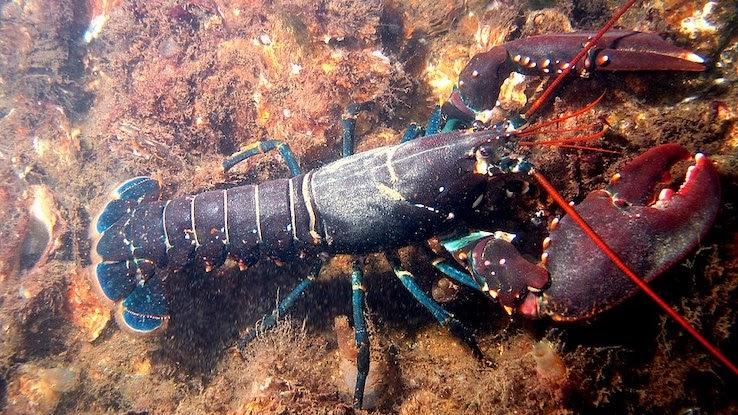
Microplastics may be more than toxic than normal-sized pieces of plastic because their surface expanse allows them to absorb more pollutants. Thoroughly gutting these sea creatures earlier cooking and eating them could minimize the risk of humans ingesting microplastics, at least.
Glitter as a Marine Life Killer
It turns out that glitter is killing all kinds of marine life, from plankton to whales. Similar the microbeads found in many face up washes, glitter is a microplastic — a plastic fragment measuring less than v millimeters. Many U.Due south. states have already passed laws restricting or banning the sale of microbeads, simply glitter hasn't been included.
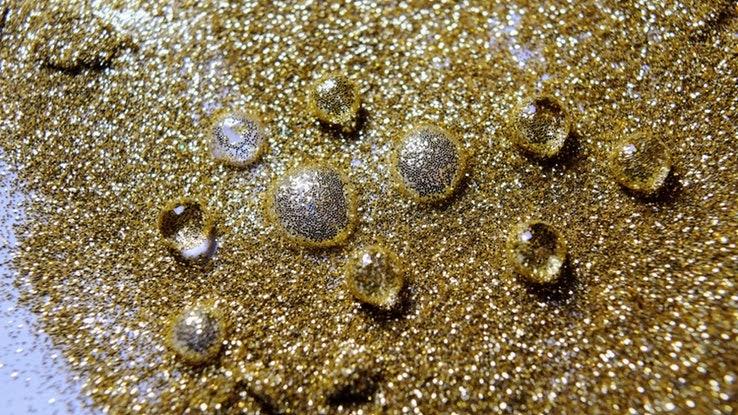
Luckily, there is an alternative so nosotros can all continue a little sparkle in our lives. Synthetic mica, already used by some cosmetics companies similar Lush, is an eco-friendly, sparkly glitter culling.
Single-Use Plastic = Biggest Source of Trash
There are 165 million tons of plastic in the body of water, and 89% of it is single-use plastic, like plastic bags, straws, utensils and packaging products. Imagine how much pollution we could eliminate if we just eliminated — or at to the lowest degree severely diminished — single-apply plastic products.
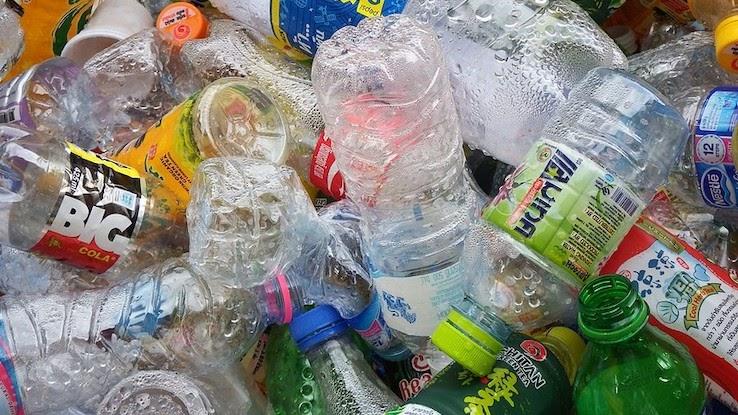
Many places around the earth have begun banning or restricting single-use plastics, including the European Union, Canada, South Korea, parts of Australia and many parts of the U.S. and United mexican states. Hopefully, these moves volition help jump get-go the process of cleaning up our oceans.
Oceans of Plastic in Rivers
The majority of the plastic in the ocean didn't get thrown directly in the sea. It entered from rivers, which then carried the plastic out to bounding main. Ten rivers around the world are the main culprits, transporting 90% of all the plastic that ends upwardly in the ocean.
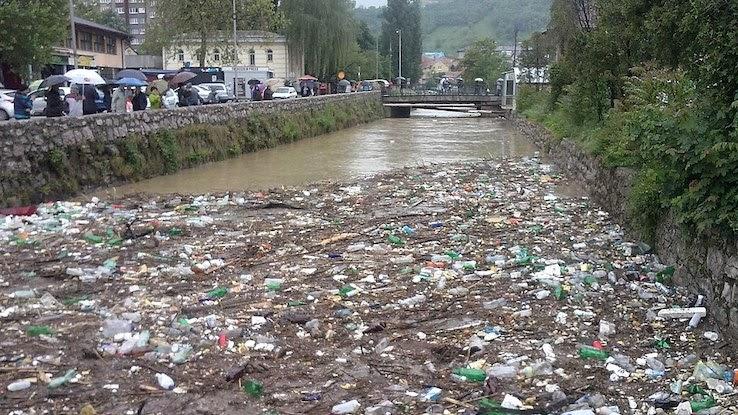
All of these rivers are in areas where there are massive populations and very fiddling education about the dangers of plastic trash. They are the Yangtze, the Indus, Yellow River, Hai River, the Nile, the Ganges, Pearl River, Amur River, the Niger and the Mekong, listed in society of pollution.
Rise Acerbity Levels in the Ocean
Carbon dioxide emissions are causing the ocean to go a lot more acidic than it once was. Over the past century, the body of water has go 26% more acidic, going from eight.2 to 8.ane on the pH scale. However, by the stop of this century, that percentage could double, leaving the sea at 7.7 pH units.
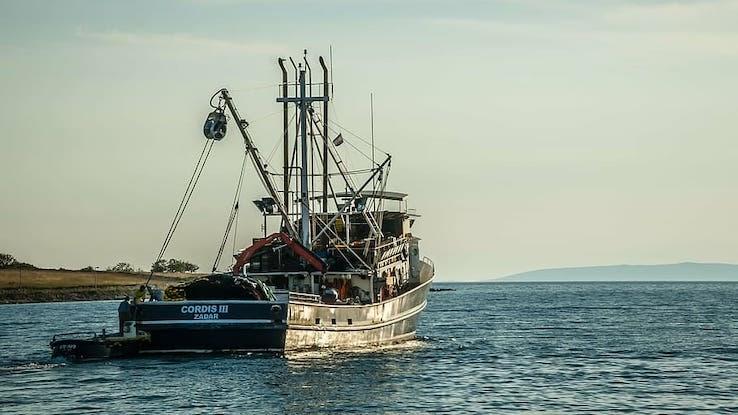
This level of acidity will kill many marine creatures, such as corals, plankton and oysters. The effects will completely alter the marine nutrient chain, causing food shortages for marine animals and severely altering the amount of seafood humans tin harvest.
Air Pollution's Connection to Coastal Toxins
It isn't merely trash and agronomical runoff that pollutes the oceans. Air pollution also contributes to its toxicity. Despite awareness virtually climate modify and the disastrous impacts it could accept on Earth and human life, air quality in the U.S. has actually gotten worse in the by few years.
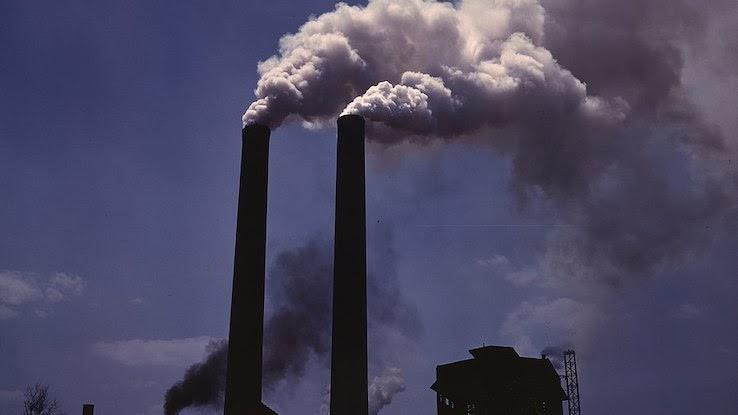
In 2019, the U.South. experienced fifteen additional days of unhealthy air compared to previous years. Unfortunately, CO2 and other types of air pollution are absorbed by the sea, dissolving into carbonic acrid. Almost one-third of all our carbon dioxide emissions end up in the sea.
Industrial Sewage Going into the Ocean
Industrial waste, even when information technology'south disposed of legally, is frequently disposed of in the sea, much similar the rest of the sewage that comes from domestic and commercial sources. The issue is that industrial sewage tends to be much more hazardous, containing heavy metals like pb, arsenic and mercury.
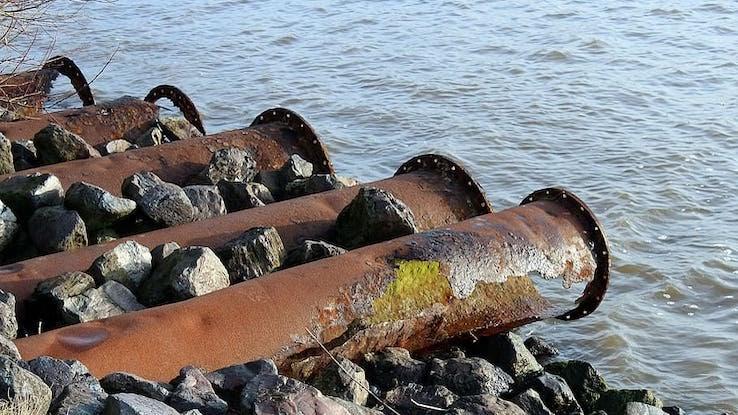
Sometimes, industrial waste doesn't even undergo pretreatment to minimize the damage it can cause to the environment. Too, not all chemicals are removed through the process of wastewater treatment, and much of that ends upwards in the sea, contaminating the water and threatening the marine ecosystem.
Difficulty Clearing Plastic from the Ocean
The problem of plastic polluting our oceans at a rate of eight million tons per year is made worse by the fact that it's not at all easy to remove all that plastic once it'south there. Microplastic particles that contaminate the sea are difficult to detect, and effective strategies for removing them are slim to none at this point.
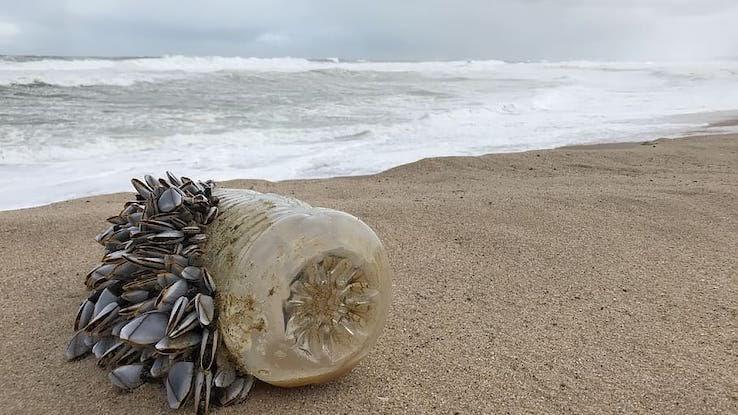
Another problem is that a lot of the plastic polluting the ocean sinks to the bottom. Collecting garbage xiv,000 feet down off the seafloor is a difficult and expensive task.
Mercury Levels on the Rise
Climate change is causing mercury levels in the bounding main to increase. Considering that the Earth Health Organization has listed mercury as ane of the nigh toxic metals in the world besides as one of the top 10 threats to public health, this is a astringent problem.
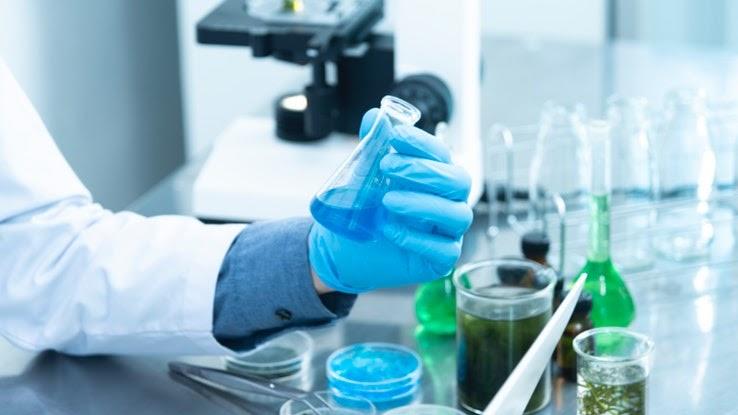
The ocean is more acidic because of climate modify, and a more acidic ocean increases how much methylmercury is in the food web. This affects humans directly, because these warmer climates stop upward increasing methylmercury levels in larger fish, which we eat. When humans swallow mercury, it tin can pb to neurological disorders.
Human being Audio Pollution and Marine Life
Sound pollution is often not considered when thinking about the ways humans are impacting marine ecosystems and life. However, man noise disturbance, largely created from ship traffic, creates a severe disruption among sea creatures and whales in item. This is considering whales use sound to communicate with one another and maintain their locational bearings. This disruption can actually impact whales' reproduction and survival.
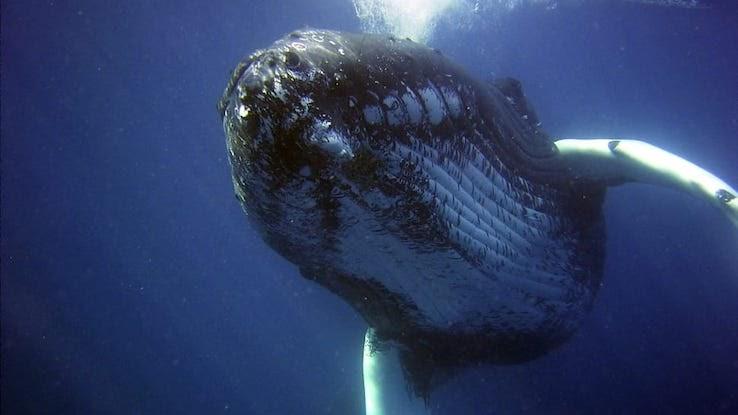
Marine sound pollution besides impacts many other sea creatures. Farthermost dissonance underwater can cause them to hemorrhage, damage their internal organs and fifty-fifty cause them to migrate. All of these consequences can easily lead to decease.
Disappearing Marine Forests
Kelp forests are one of the ocean'southward most diverse ecosystems. They are found off the declension of every continent, except Antarctica. Many marine animals use them for shelter and nutrient. In addition, they are part of the global tourism and line-fishing economies.
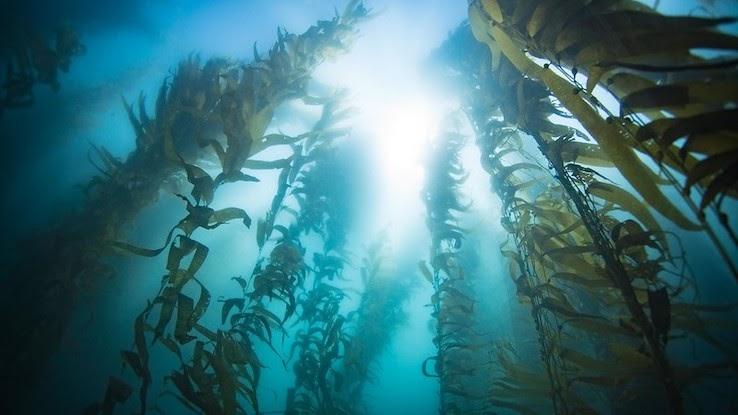
Scientists think kelp forests are disappearing every bit a event of warming oceans. Invasive species are some other crusade of damage. For instance, in Commonwealth of australia, Nippon and the Mediterranean, tropical fish are chowing down on kelp that isn't a normal role of their diet. Overall, the world has seen a 38% decrease in kelp forests over the by 50 years, and it doesn't show signs of improving.
Damage from Offshore Oil Drilling
The common thread between all oil spills is that they cause long-term, irreversible impairment to marine environments, even if not all the consequences are immediately obvious. While much of the harm occurs within the kickoff few weeks of the spill, indirect damage that takes longer to announced is also an issue.
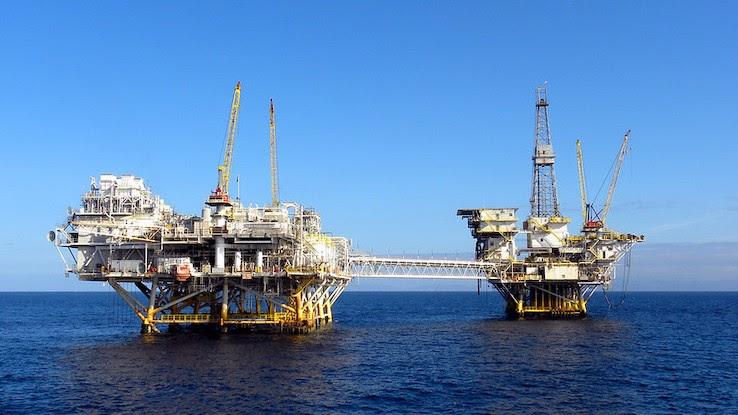
If a marine animate being vital to the ecosystem is diminished or altered, the whole ecosystem could collapse. Rest oil can remain in the surroundings for upward of 100 years. On meridian of that, oil spills can cause frail littoral wetland ecosystems to erode over time.
Dangerously Depleted Fish Stocks
"There are plenty of fish in the body of water" may stop being the authentic saying it once was if we don't stop overfishing. One third of the world's commercial fish stocks accept reached unsustainable harvesting levels, with 90% of them already completely exploited.
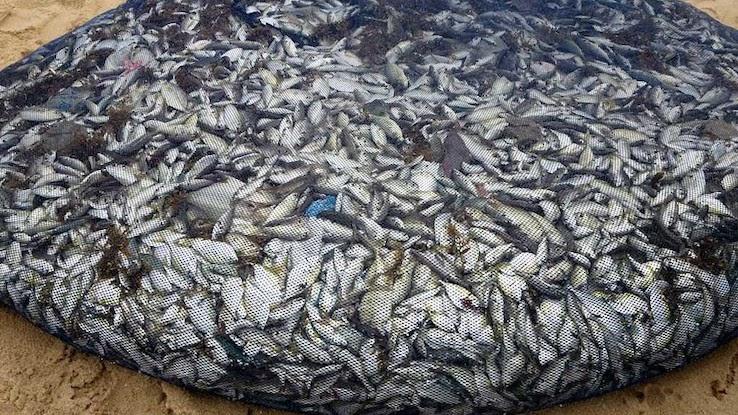
While nations made promises to the World Trade Organization to decrease their fishing, funding for fisheries has actually increased in many countries in recent years. Banning destructive fishing policies as soon as possible, particularly in the wake of drastic climate change, is critical to making certain nosotros don't run out of fish.
Near Extinction of Cod in Canadian Waters
In the '90s, Canadian cod had nigh gone extinct, which wasn't that surprising, considering cod fisheries fed millions of people and contributed massively to the economy. The cod population never fully recovered, and the fish volition probably become extinct, despite conservation efforts in recent years.
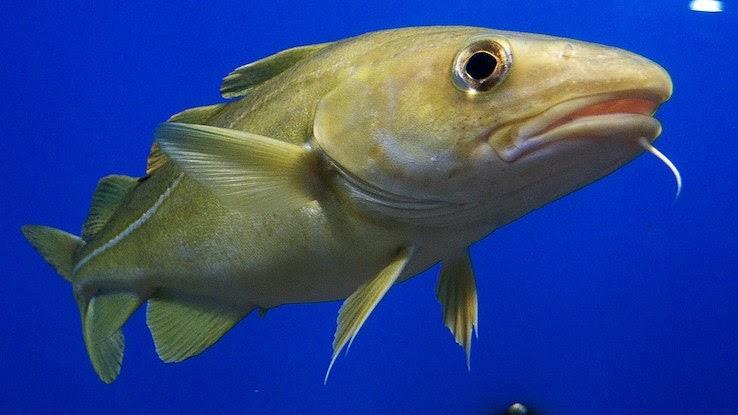
New studies suggest that because of natural predation by grey seals in the Gulf of St. Lawrence and surrounding areas adding to the problem, the region's cod will likely be extinct past 2020. The simply way to stop information technology seems to be reducing the greyness seal population by 65%, which may be neither viable nor effective.
Expressionless Zones in the Atlantic Ocean
Nearly marine dead zones — areas where there is no dissolved oxygen in the h2o to back up life — form seasonally in shallow areas near coastlines equally a upshot of sewage and fertilizer runoff. However, the dead zones found in the Atlantic Ocean in recent years are fashion out in the middle, far abroad from the coast.
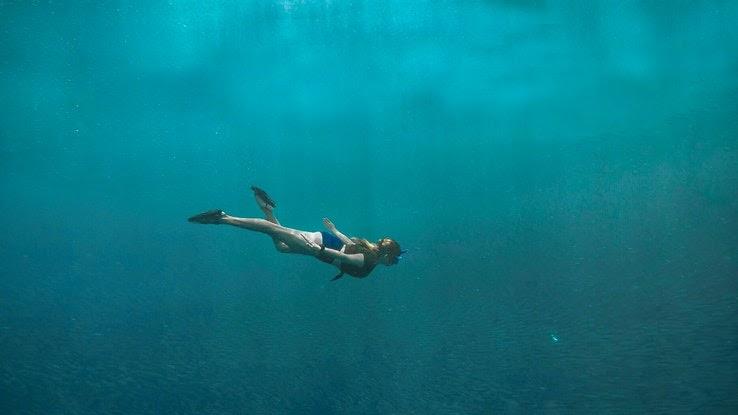
Climate change is the likeliest cause of these North Atlantic dead zones, equally warmer water tin't hold as much oxygen. Since the 1960s, dead zones have doubled every decade. They can have a huge environmental touch on, including depleting the angling economy.
Marine Vertebrates Disappearing
Since 1970, 50% of marine life has disappeared completely. In some species, like tuna and mackerel, the population has gone downward by 75%, while others are very near extinction. Overfishing is one of the primary causes of this massive global disappearance of marine vertebrates.
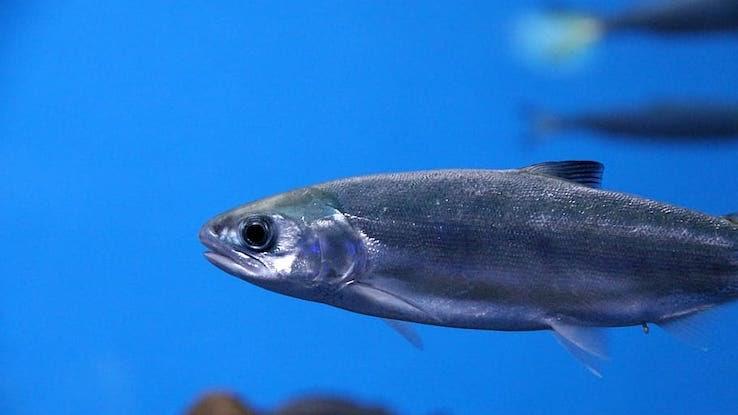
Other causes that are leading our oceans to the brink of collapse are the intrinsically related climate change and pollution. With 165 1000000 tons of plastic in the bounding main on top of the h2o apace warming and acidifying, many marine ecosystems are dying, and the marine animals are dying along with them.
Trouble with Seashell Souvenirs
Coastal ecosystems really depend on seashells. Whether seabirds use them to build nests, fish utilise them as protection to hide from predators or algae and other microorganisms plow them into homes, seashells have a lot of functional purposes. Taking them from the embankment endangers the ecosystem'south organisms and threatens their survival.
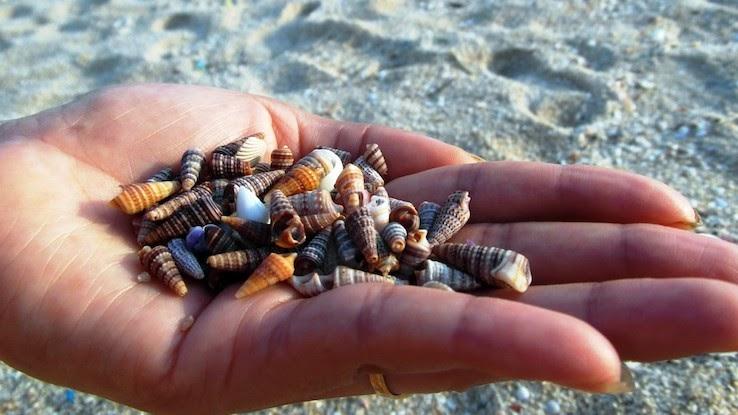
Pocketing shells every bit souvenirs too contributes to the rate of shoreline erosion. Of course, other factors contribute to the destruction of this ecosystem, merely millions of people grabbing shells from the beach and taking them home adds significantly to the problem.
traviswitteorsell.blogspot.com
Source: https://www.simpli.com/world-events/man-made-reasons-oceans-in-danger?utm_content=params%3Ao%3D740008%26ad%3DdirN%26qo%3DserpIndex
Belum ada Komentar untuk "how to tell a naked man what to do"
Posting Komentar